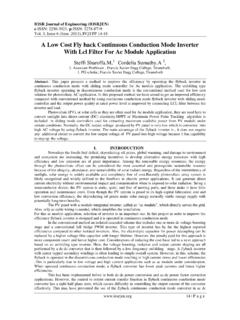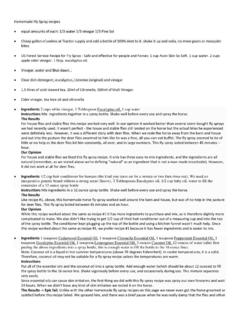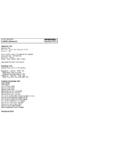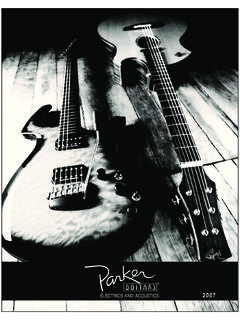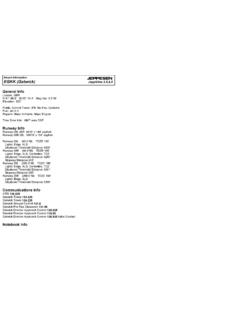Transcription of PHOTO: Brett B. Despain Fly the Dog - www.B737MRG.net
1 1 by Captain Pat BOONE Pilot errors from a pilot perspective While aircraft systems have become more reliable over time, pilot human behavior becomes the most critical factor affecting aviation safety today. Simulator training often focuses on flying skills and the correct execution of emergency checklists and standard operating procedures (SOPs). However, statistics show that aircraft accidents seldom involve typical simulator trained failures. Should we focus on something else ? Engine failure, loss of all electric generators or cabin decompression rarely result in fatal accidents, although the latter one can be overwhelming.
2 An inextinguishable engine fire is not a life-threatening event, despite scare stories that the wing drops off if the engine burns for 10 minutes or more. A recent wing fire on a Singaporean triple-7 proves the opposite. All-engine flameout due to heavy rain, ice crystals or volcanic ash have occurred in real life, but has never led to a fatal crash in the past few decades. I would even go as far as to say that none of the failures instructed in the simulator, if they are managed correctly with an appropriate flight crew response, ever compromise the aircraft to the extent of a fatal crash, except for the following: Jammed or restricted flight controls: Your aircraft is not responding to control wheel inputs, or a flight control is jammed fully deflected.
3 I recommend to try to regain control through flight controls and engine secondary effects. Unreliable flight instruments: Airspeed, altimeter or attitude indicators showing confusing or even contradictory values, for example overspeed and stall warning go off simultaneously. My advice is to freeze the aircraft attitude for a few seconds until both pilots determine which indicator is working correctly. Fly the Dog photo : Brett B. Despain 2 Cabin fire: Any fire starting inside the fuselage can destroy the aircraft in only a few minutes.
4 Videos on the internet show flames coming out the aircraft ceiling only minutes after the fire ignited. My advice is to initiate an immediate descent and consider an off-field landing as soon as the cabin crew reports flame height exceeding 1 meter / 3 feet, even when crossing 40 west over the Atlantic. This doesn t mean simulator training is useless. On the contrary you need to practice those skills in order to fly the aircraft safely. However, simulator training should not solely focus on type-rating requirements. In fact, if you double or triple the simulator hours, almost anyone, including your mother in law, can fly an ILS without any previous flying experience.
5 Flying a perfect ILS does not make you a safe pilot. So, why are we still crashing airplanes? Why do aircraft in perfect condition continue to skid off the runway every month? It s no secret that 6 out of 10 accidents are caused by pilot error, of which nearly half during landing. Flying an ILS with perfect precision does not make you a safe pilot. It s not pilot skills, but people skills that make the difference between an ordinary pilot and a safe pilot. Becoming a safe pilot should be your ultimate goal. While pilot error can never be eradicated, there are two areas in which I believe, from a pilot perspective, it is possible to make the difference and become safer pilots.
6 These areas are self-discipline and Cockpit Resource Management (CRM). Self-discipline Besides flying skills and sound judgment, self-discipline is the third keystone of good airmanship. Unfortunately, there are several occasions where safety can be jeopardized, even by experienced pilots, due to lack of self-discipline. It can be something as simple as poor handwriting. Handwriting It may sound pedantic that I refer back to what you were taught many years ago, but some pilot s handwriting is similar to that of doctors. Illegible handwriting compromises flight safety!
7 Is takeoff weight or kg? Is CG for landing or units? Multiple times a year the loadsheet comes in with invalid weights simply because the initial numbers prepared by the flight crew were unreadable. Last year the airline had an in-flight engine shutdown due to poor handwriting. An excessive fuel imbalance noticed on takeoff was interpreted as a major fuel leak because of an unclear remaining fuel entry in the Tech Log by the previous crew. Keep in mind that fellow pilots and ground personal may come from other cultures using different alphabets. Simple numbers may be interpreted incorrectly when your handwriting is not clear.
8 3 It requires extra effort and self-discipline to write clearly. I strongly recommend to use unambiguous handwriting whenever you take down the weather, prepare the loadsheet, order fuel or calculate aircraft performance. Use of checklists It is very unusual for pilots to deliberately skip the checklist. On long taxi routes to a distant takeoff runway there is an increased risk that the crew gets distracted by non-operational chitchat and consequently an increased risk of forgetting the before takeoff checklist. However, even more important is the way the checklist is completed.
9 If you read and reply to checklist items without looking at the switches, it reduces the effectiveness of the checklist to nothing! I am surprised by the normal checklists of a major manufacturer where the first-officer does the overhead panel setup, he or she reads the checklist items and then responds to the items him or herself. The typical verbal challenge and response crosscheck is completely wiped out here. It takes an enormous level of self-discipline for the captain to concentrate and actively follow the checklist and not be distracted by ground personal calling the flight deck, by cabin crew reporting boarding issues or by any other My advice to co-pilots is to monitor your captain while you read the checklist.
10 If you notice any inattentiveness, simply stop the checklist until your silence wakes up the old man and he returns focus. Unfortunately, I notice that most co-pilots simply continue the checklist when I grasp my cell phone for an incoming text Reading checklists, up to 30 times on a commuter pilot working day, is a routine task and therefore increases the risk that the checklist is accomplished without the pilots attentively verifying switch position and flight deck indications. Pilots onboard a Spanish MD-82 verbally confirmed flaps set for takeoff while reading the checklist.



